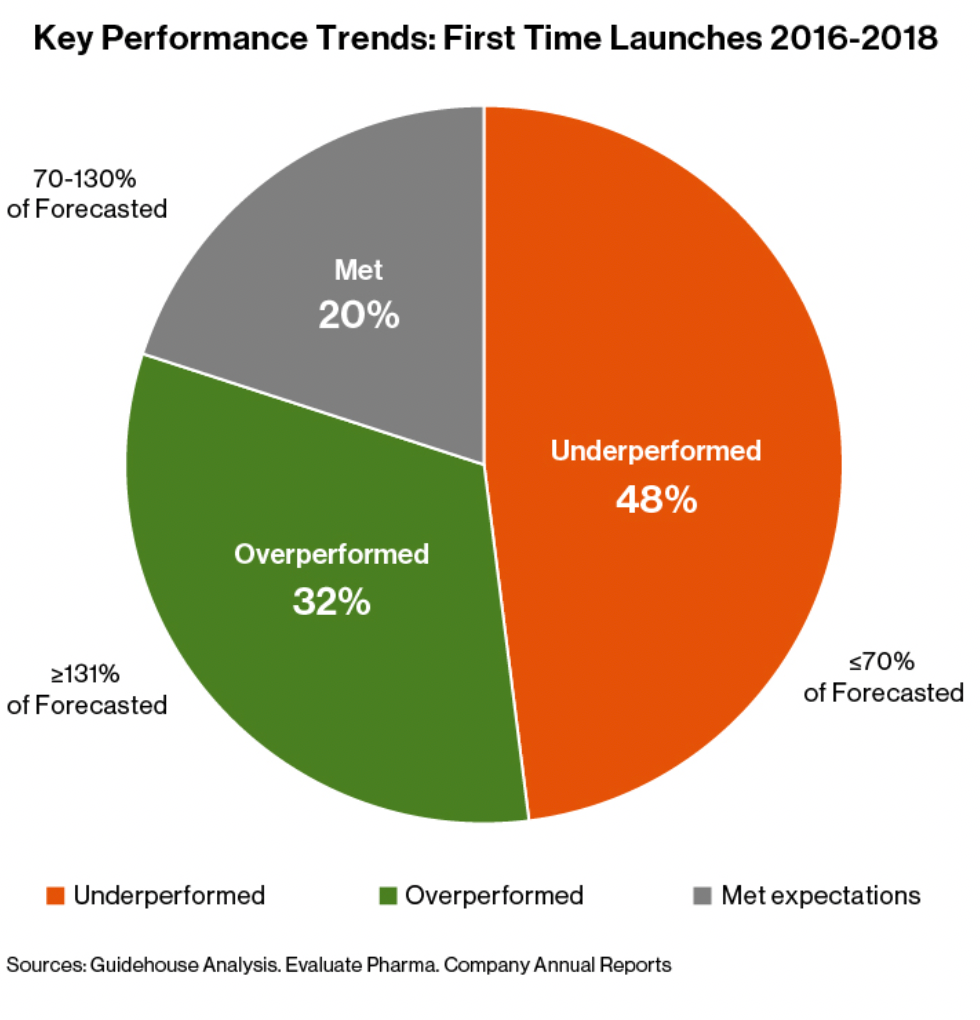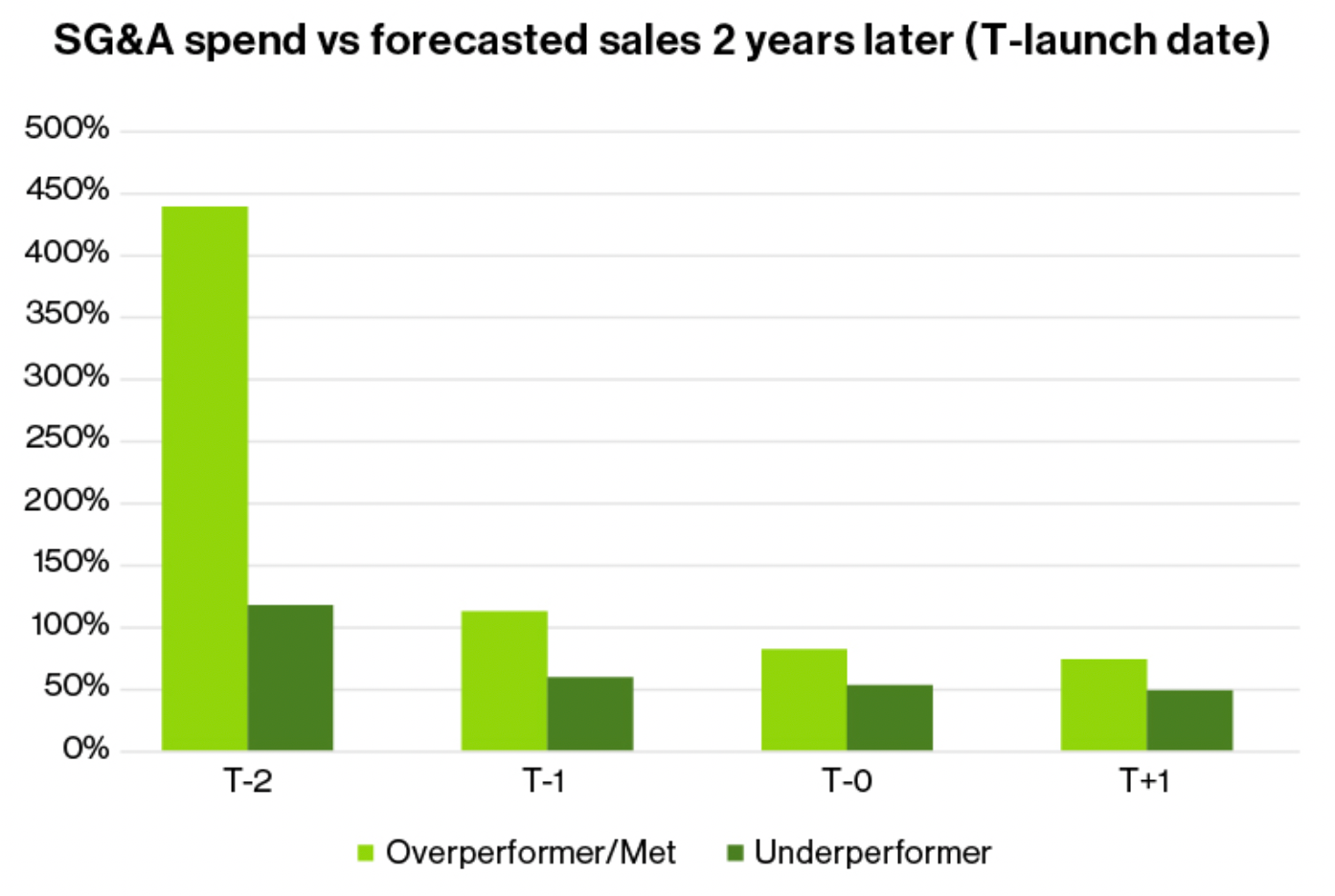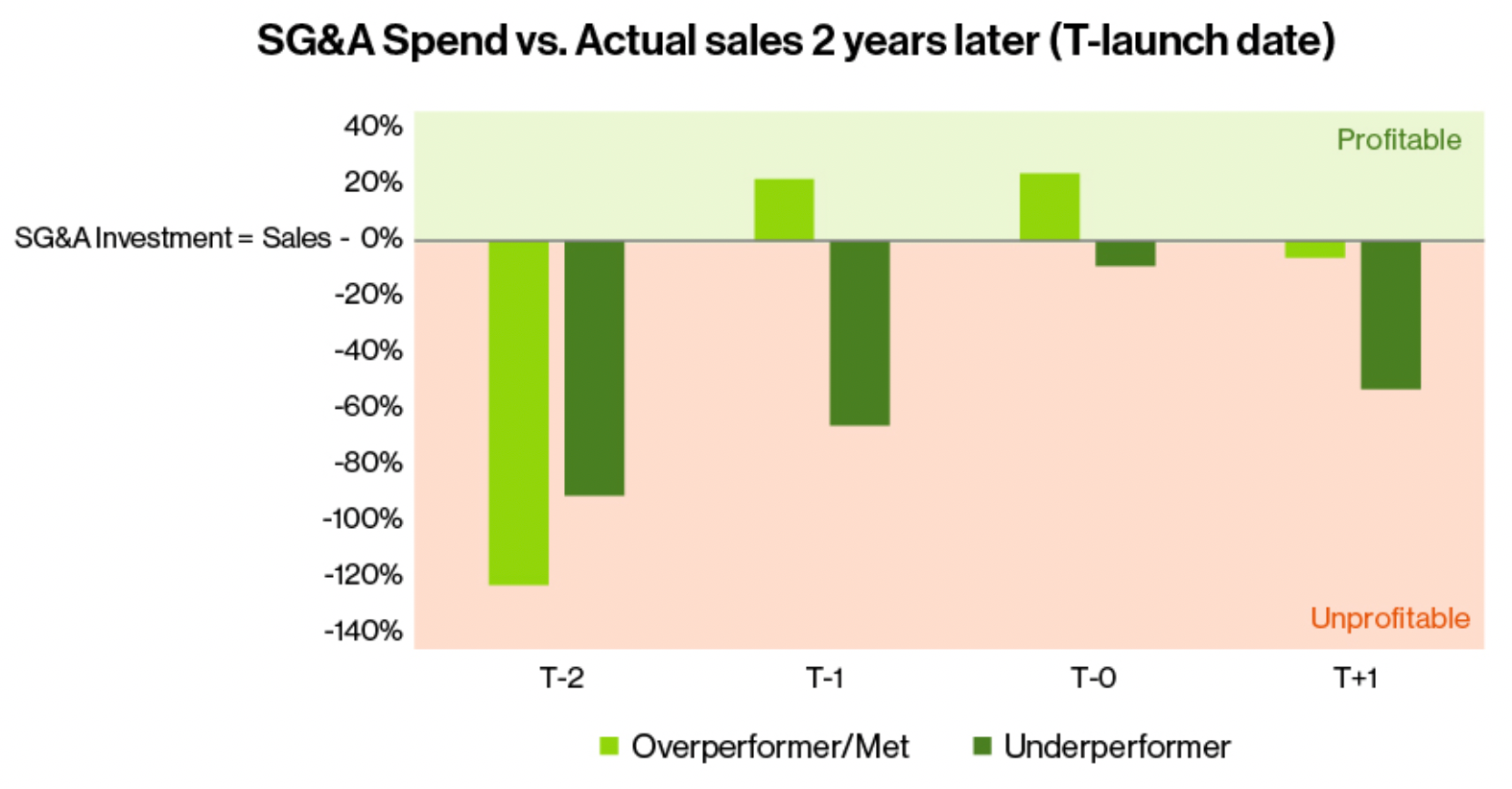Research Reveals New Launch Standards for First-to-Launch Pharma and Biotech Companies in the U.S.
While COVID-19 has shifted the rules of the healthcare industry, research shows there was already progress on changes being made for how pharma companies are launching products.
It’s no secret the life sciences market is changing – fast. Even before the novel coronavirus (COVID-19) created new rules for the healthcare industry, research shows major shifts in best practices for launching products are materializing in the pharmaceutical and biotech markets.
From 2016-2018, 27 companies – representing treatment options ranging from orphan drugs to specialty products to chronic therapies – launched products for the first time in the United States, and data is available for 25. Rigorous data analysis to identify the key trends and factors driving launch performance uncovered significant differentiators that emerged since prior analysis of all product launches from 2011-2015 in the U.S.
The performance of these 2016-2018 newcomers illuminates emerging new launch standards for pharmaceutical and biotech companies. Importantly, the results defy some long-held conventional beliefs in these industries, including the assumption (based on the analysis from 2011-2015) that 60% of drugs will fail on market. They also challenge these so-called “truisms” for securing the best possible results:
- We can delay investing in launch closer to approval.
- It is best for us to launch as close to approval as possible.
- We must minimize investment prior to launch to reduce impact on future profitability.
- Launching in a specialty setting leads to more success.
- Oncology-focused products drive the most launch successes.
Defying conventional beliefs
First, the newcomers experienced an uptick in the ability to achieve or exceed expectations over previous years – more succeeded in meeting or exceeding forecasted projections. In fact, only 48% of the first-timers’ products underperformed. See Figure 1.
Figure 1: Performance of First-Time Launches
This graphic shows the overall performance from launch year to 2019 sales relative to forecasted numbers.

Segments that overperformed included treatments for:
- Central nervous system disorders
- Genetic disorders
- Metabolic disorders
- Immunology and Dermatology
- Gastrointestinal
For those that underperformed, it is important to note that 50% were specialty treatment options, which again contradicts launch legend. The underperforming segments included therapies for:
- Oncology, marking a shift since 2011-2015 when this segment performed higher than others
- Cardiovascular conditions
- Infectious disease
- Hematological disorders
- Ophthalmology
Success factors of newcomers
For those that prevailed, data analysis revealed the following factors that contributed to their launch success.
1. Invest early
Traditionally, leadership teams believe in at least one of two investment strategies, which also aimed to honor pressure from their boards and investors to maintain capital and liquidity:
- Delay investing in market-shaping activities as long as possible (e.g. “just in time” investments)
- Invest less to reduce dilution and minimize impact to profitability
However, the first timers – including specialty and hospital channel treatments for three disease areas – that invested and began commercial development earlier were more successful than those that did not. The ones that delayed failed more frequently, even if they spent the same or more than their earlier-to-invest peers. These underperformers included a specialty product for a central nervous system disorder, and both first-in-class and additional hospital product entrants for oncology.
Figure 2: This graphic shows the analysis evaluating a company’s total selling, general and administrative expense (SG&A) spend relative to forecasted sales two years later illustrates that making larger investments earlier (T-2 years before launch) is correlated with more successful launches.

Figure 3: Analysis evaluating a company’s total SG&A spend relative to realized sales two years later illustrates that making larger investments earlier (T-2 years before launch) results in higher profitability post-launch.

In addition, higher earlier investment correlated with more successful launches, and also allowed companies to reduce investments on the backend over time relative to their underperforming/underinvesting counterparts. In fact, spending more earlier, overperformers became more profitable. In contrast, underperformers spent less early on, and then continued to invest a higher percentage of their actual sales on the back end, but ultimately failed to be as profitable or recoup the investment.
This means taking a forward-thinking approach to commercialization from the time of inception – accounting for sales force, market development, marketing, medical affairs, manufacturing requirements, etc. – brought the best results, because the market was ready for the product, and understood where and how it fit.
2. Be ready to launch
Another critical success factor for the companies that surpassed expectations was the timing of their launches. Conventional wisdom dictates you should launch your pharma or biotech treatment option as fast as possible once approved – and any timeframe longer will hurt your sales and damage your team’s reputation. However, the first-timers experienced the reverse. Those that delayed their full launches – e.g. product available and in channels, physicians ready and able to prescribe, field teams deployed, associated marketing efforts underway, etc. – performed better than those that hit the market soon after approval.
It’s unclear why the delays happened in each case, but several planned and unplanned scenarios are possible. For example, in one case, as the company prepared to launch based on its anticipated approval date, the U.S. Food and Drug Administration (FDA) required additional information and approval came later when all requirements were met. For the company, this meant putting the launch on hold, refining the product, and then scaling up again two years later. By that time, the company had its market development and commercialization strategies in motion, with prepared key opinion leaders (KOLs), advocates, patient services, etc., all ready to be deployed.
Another example is a company delayed to allow more time to condition payers. Before unleashing a sales force, companies typically focus on payer education and giving medical science liaisons (MSLs) time to build KOL relationships. This time is also used to develop a comprehensive pharmaco-economic dossier and convey compelling value propositions to assist and inform payer and formulary access and reimbursement decision-making.
Some companies also made key commercial executive hires late or started launch planning and investing too late. Without core leadership in place, key launch preparation activities were delayed, including developing core strategies and tactics, hiring other key leaders in sales, market access, marketing, etc., and creating targeting plans.
In any case, companies that invested earlier in commercial development and had the infrastructure to support their launches fared better than those that prioritized speed. These companies generally put key executives – spanning commercial, patient advocacy/services, business planning, sales and marketing leads, among others – in place two to four years prior to approval and launch, and retained them post-launch, which adds continuity.
Once in place, these key team leads have the time to fully research, analyze and understand the product market – including critical barriers to adoption that must be overcome – and set strategies for commercialization.
For example, one of the treatments did not hit market until five months after receiving FDA approval. By that time, the market access team had secured coverage for 80% of commercial plans, with only 60% requiring prior approval. When the sales team came on board ahead of the launch, the team quickly gained traction among the 5,000 targeted healthcare providers, reaching 70% reached by the end of 2019.
Again, this points to the benefits of market development and commercialization due diligence and preparedness.
How do we interpret these insights in our post COVID-19 world?
These are just a few of the key insights gleaned from the 2016-2018 pharmaceutical and biotech newcomers. More data is needed to fully understand if these investment and commercialization preparedness trends will continue, especially in relation to the novel coronavirus (COVID-19) that is testing the status quo. However, the performance results of this most recent class of newcomers illustrates a new launch era is upon us.
It has always been important for companies to set an initial launch plan, including key focus areas and milestones to achieve, and to follow best practices that include conducting a strategic market assessment early on to fully understand the realizable potential of your market. However, this analysis illustrates that launching requires a longer-term strategy and precise planning to time market entry when the conditions are right, and the organization is ready for the product to succeed.
Based on these performances, the pharmaceutical and biotech company leadership teams that commit the time and resource early on to being prepared for launch through platforms including scientific exchange to disseminate critical and relevant communications with physicians and payers prior to launch are those that are more likely to succeed. That means, raising capital to support launch must happen earlier, in many cases at proof of concept, and getting key hires in place with sufficient time to create plans, develop team, and execute before launch. It means leveraging readiness assessments to help ensure the right plans and tools are in place before launch, and putting mechanisms in place to collect data in real time post-launch to monitor progress and act on new insights and nurture your product’s trajectory. In the post COVID-19 era, it also means equipping field teams with remote engagement solutions and bolstered patient support offerings with an eye towards incorporating smart solutions to develop a field force for the future.
All of these aspects require thoughtful strategies and committed resources to prime the market and engage in relevant scientific exchange – including tailored considerations for patients, providers and payers – before your product hits the market.
Authors
Maya Desai, Blake Beber, Eduardo Schur and Justin Zamirowski
The Misinformation Maze: Navigating Public Health in the Digital Age
March 11th 2025Jennifer Butler, chief commercial officer of Pleio, discusses misinformation's threat to public health, where patients are turning for trustworthy health information, the industry's pivot to peer-to-patient strategies to educate patients, and more.
Navigating Distrust: Pharma in the Age of Social Media
February 18th 2025Ian Baer, Founder and CEO of Sooth, discusses how the growing distrust in social media will impact industry marketing strategies and the relationships between pharmaceutical companies and the patients they aim to serve. He also explains dark social, how to combat misinformation, closing the trust gap, and more.